Moduls for Process Improvement
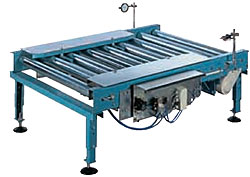
2-sided pallet centring
The centring acting on two sides is used for centric alignment of empty pallets and fully loaded pallets. It is used before the unloader, loader or other transport segments for exact centric delivery of the transport goods. The compact design enables to integrate this centring subsequently in standard roller conveyor segments.
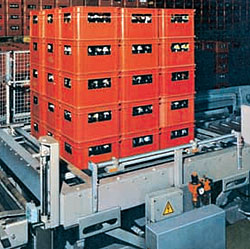
4-sided pallet centring
The centring acting on 4 sides is used for the load alignment on all sides on the pallet. It is used before the unloader at high plant capacity and during excess or lower loading of the pallet. By this, the damage on bottles through the hooks of the head of grab is prevented. By the centring the box stack is positively aligned on the outer box edge.

Electrically adjustable multi-pallet magazine
This station can be functionally designed as stacking magazine, as destacking magazine or as warehouse magazine for stacking or destacking. The motor-driven grappler adjustment enables processing of all standard pallet types as well as special pallets. It is possible to fit the known transport segments.

KEG/Barrel adjustment station
is used for alignment of empty KEG palletswhich are charged to a plant. The characterising feature of this adjustment station that the pallet is aligned with KEG barrels centric to the roller conveyor an for further optimum transport – for example – by means of KEG unloaders. This prevents an offset of the stack appearance, projecting ends and interfering edges are omitted and the stability of the pile appearance increases.
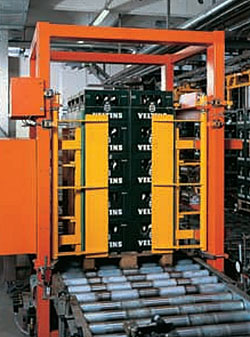
Box adjustment station
is used for alignment of empty pallets which are led to a plant. Characterising feature of this adjustment station is that the pallet with the empty boxes is aligned centric to the roller conveyor and for further optimum transport by unloader, for example. No offset of the stack appearance on the pallet. Can also be designed as full centring if an exact pallet appearance without projecting ends is required for feeding high-bay warehouses.

Pallet checking device
During empty pallet check, floor running boards and floor transverse boards are checked. By this, missing blocks can also be identified. Cover oards are arranged longitudinal or crosswise. The test pressure for the cover and floor boards is variably adjustable. A tension control is also possible by an additional device. Even for loaded pallets, the floor running boards and floor transverse boards including blocks can be checked provided the minimum weight of the load is ensured for the required counter-pressure.
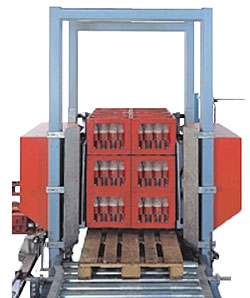
Pallet changing device
Empty pallets with defective running boards (identification by preceding pallet control) are stopped before entering the plant. Clamping and lifting of empties from a defective pallet. After that, run-out of the defective pallet and entry of the good pallet. Later, the empty is lowered and the clamp released for further transport to the plant. The defective pallet is transferred outward.
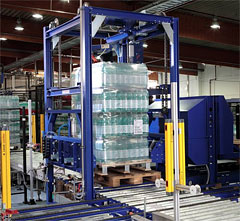
Pallet stacking device
The pallet stacking device is used to stack two semi pallets onto one support pallet (e.g. euro pallet). Another application is stacking respectively destacking of KEG pallets.
Lift movement is performed by a gear motor equipped with a holding brake, robust hoist chains raise the lift cage. The massive drive shafts are supported by four pillow block bearings. Fork lifts move into the free space of the pallet horizontally driven by double-acting pneumatic cylinders.